Too-Specific Top 10 - Format Foundations

(Teferi, Master of Time | Art by Yongjae Choi)
Core Competents?
Welcome to Too-Specific Top 10, where if there isn’t a category to rank our pet card at the top of, we’ll just make one up! (Did you know that Pia and Kiran Nalaar is the only legendary creature card from a Core Set to represent two different people?)
It has been almost 27 years since the release of Alpha and the beginning of Magic: The Gathering. That first set was then followed by Beta and Unlimited before the first release of an expansion set, dubbed Arabian Nights. All of that happened in the very first year of Magic's history: 1993.
The spring of 1994 brought us Revised, also known as Third Edition, followed by Fourth Edition in May of 1995, Fifth Edition in March of 1997, and the first of the Core Sets to have an expansion symbol was printed in April of 1999 in the form of Sixth Edition. This every-other-year Core Set printing schedule would hold for quite some time, with really only minor changes to the formula.
Seventh Edition introduced the Arabian numeral to the expansion symbol, Eighth Edition and Ninth Edition introduced some cards behind said numeral, and then Tenth Edition returned to the simple Roman Numeral, but more importantly eliminated the reprints-as-white-bordered-cards phenomenon from the Core Set tradition. With that said, all of the cards in Tenth Edition were still reprints, as they had been for every Core Set other than Alpha up until that time. Magic 2010 would change that, along with introducing the Core Set expansion symbol we all know and love today, a simple "M" followed by the last two digits of the year after its printing. This would also usher in the annual printing of Core Sets as opposed to the every other year process we had come to know throughout the 2000s.
Legends in Core Sets were still something of a rarity, however. Believe it or not, a legendary card of any type did not appear in a Core Set until Tenth Edition in 2007, long after EDH had been created and subsequently abandoned the original Elder Dragons as the sole commanders of the format. Indeed, to find the first original legendary cards from a Core Set, you have to wait until Magic 2012 introduces never-before-seen planeswalkers to the Core Sets in the form of Chandra, the Firebrand, Jace, Memory Adept, and Garruk, Primal Hunter... although it must be stated that, at that time, planeswalkers were not actually considered legendary.
The first original commanders available from a Core Set didn't show up until the next year, however, with Magic 2013 featuring one legendary creature for each color: Odric, Master Tactician in white, Talrand, Sky Summoner in blue, Nefarox, Overlord of Grixis in black, Krenko, Mob Boss in red, and Yeva, Nature's Herald in green.
Considering that four out of those five have been popular commanders for most of the last decade, however, it's hard to say that the original cycle of Core Set commanders weren't a hit. Apparently the numbers that EDH drew in those days weren't enough, however, as there were not original printings of legendary creatures again until Magic 2015, where there was a full rare cycle along with the very first non-creature legend (provided you don't count planeswalkers that wouldn't technically become legendary until the release of Ixalan) in the form of The Chain Veil. This new type was such a success that it immediately came back in the next Core Set in 2015, Magic Origins, with three different legendary artifacts. Magic Origins would also feature the first flip planeswalkers. It was also the last Core Set for several years, as they were temporarily abandoned until Magic 2019 came out in mid-2018. The big story there, however, is the sheer increase in the number of legends.
The first Core Set to have legends in it, Tenth Edition, had a total of 11 legendary cards in it, which of course were all reprints. Magic 2011 had even fewer, with just the original reprints of the original five Lorwyn planeswalkers. Magic 2012 kept things the same, although two of the cycle of planeswalkers, Gideon Jura and Sorin Markov, were reprints from Zendikar block. Magic 2013, 2014, and 2015, combined, had 27 total legends, 20 of which were original designs. Magic Origins then kicked it up a notch with 13 legendary permanents, all of which were original designs for the set. After an almost five-year hiatus without Core Sets, however, one can only imagine that the popularity of both Commander and planeswalkers had come to the attention of Wizards of the Coast, as Magic 2019 had 20 total legends in it, all of them original. The trend continues with Magic 2020, with 25 legends and a full cycle of Chandras.
So, with this being the "Year of Commander" and the recent release of Magic 2021, where did we end up in the legendary department? Well, the trend continues right on schedule, with 30 legends in the new Core Set, 28 of which are brand new cards.
With this whole timeline laid out, and the new focus on Commander from R&D in more recent sets, I couldn't help but wonder as we continue to plow through a year of cards we've been told are specifically designed for our favorite format... what were the best legends to ever grace a Core Set?
Top 10 Core Set Legends
As usual, there are a couple ways that we could organize this list. My first inclination, this being the year of Commander, was to just look at what the best commanders were, but that ended up to not be that interesting.
I'm actually starting to lose count of the number of lists that Golos, Tireless Pilgrim is featured on, and having two more best commanders that are also on the EDHREC Top Commanders list also featured on our top ten list doesn't seem like it's really bringing anything new to the conversation. We already know that Yarok, the Desecrated is powerful, and Arcades, the Strategist enables another version of a Walls deck with more powerful colors. Besides, as we covered in our timeline, Core Sets weren't really about legendary creatures or commanders for the majority of their lifespan; that's more of a recent development. Actually, what Core Sets have really been about for most of their lifespan has been reprints.
Top 10 Legendary Core Set Reprints
- Urborg, Tomb of Yawgmoth
- Azusa, Lost but Seeking
- Ugin, the Spirit Dragon
- Liliana Vess
- Arcanis the Omnipotent
- Garruk, Primal Hunter
- Garruk Wildspeaker
- Jace Beleren
- Liliana of the Dark Realms
- Akroma's Memorial
Boy, howdy, is that a lot of planeswalkers, and whichever ones aren't planeswalkers look to be made of $20 bills, for the most part. This list is a bit more interesting than rehashing the top commanders list, but it still really isn't bringing much to the conversation.
So what about the originals, then? That seems to be the new tactic that the new Core Sets are employing: printing new legends straight into the Commander format. Does that mean that the list is only made up of newer cards, which will just be out-powered by the even newer cards from Magic 2021?
Well, why not find out?
Criteria: Legends that were originally printed in a Core Set. As is tradition, all results are ordered by EDHREC score.
10. Krenko, Mob Boss
(Helms 2,347 Decks, Rank #23; 5,204 Inclusions, 3% of 180,421 Decks)
If you're looking to flood the board with tokens, it's hard to do better than Krenko, Mob Boss. Even if your board consisted of just this legendary Goblin Warrior, you could expand your horde to two with his very first tap and four on his second. From there, a quick recollection of early gaming consoles will do you well, as you go from an 8-gobbo Nintendo, double that to a Super Nintendo's worth, grab a Sega Dreamcast, and then get yourself a shiny new Nintendo 64's memory worth of Goblin tokens on Krenko's sixth activation. Usually by then someone at the table is concerned enough to mess with memory math before it enters into "mid-90s RAM" numbers. Regardless, the point is that exponential growth is powerful, whether you're talking about Moore's Law or just trying to find enough dice to represent your current token count.
9. Garruk, Primal Hunter
(7,813 Inclusions, 4% of 184,913 Decks)
One of the first batch of planeswalkers to ever be designed for a Core Set, Garruk, Primal Hunter can immediately create a beefy 3/3 defender upon hitting the board and then Harmonize off of said creature the following turn. That by itself would already be worth five mana, but the fact that you'll often draw even more cards than that is just gravy, as is an ultimate that gives you a 6/6 Wurm for every land you control. In short, Garruk, Primal Hunter is everything you could want in a Core Set planeswalker: simple, powerful, and cool. The Spikes will revel in the sheer efficiency, the Timmys and Tammys will dream of how many cards they'll be able to draw off of their huge creatures, and the Johnnys and Jennys will put together turns and turns of in-depth machinations to get the ultimate payoff to do who-knows-what with.
8. Goreclaw, Terror of Qal Sisma
(Helms 651 Decks, Rank #186; 7,506 Inclusions, 4% of 184,913 Decks)
While the overwhelming response when Goreclaw, Terror of Qal Sisma was printed was that we finally got a Bear commander and it's not even good with Bears, the conversation evolved somewhat with the printing of Ayula, Queen Among Bears. Despite Goreclaw's lack of synergy with fellow members of genus Ursus, she actually still has quite a lot of synergy when it comes to what green is often trying to do. Getting your large creatures out early, making them even bigger, and then giving them trample for the win is quite the combination of things to put all on one card. Add to that that Goreclaw has four power for four mana and actually benefits from her own attack trigger, and this is an easy inclusion for just about any deck trying to go tall and wide all at once.
7. Vilis, Broker of Blood
(Helms 355 Decks, Rank #295; 7,871 Inclusions, 4% of 196,070 Decks)
Vilis, Broker of Blood is the first genuine surprise on this list for me. Having never seen a copy in play in my games personally, I had assumed that the eight-mana cost for this Demon had ended up being too much for him to see widespread use. All in all, however, I suppose I shouldn't be surprised that the color which can Reanimate huge creatures into play for little to no cost has found a way to get an 8/8 flyer who both draws cards and acts as removal both into decks and into play. Just in case anyone else is wondering what decks those are that are making room for this monstrosity, however, the answer is K'rrik, Son of Yawgmoth.
Almost 20% of Vilis's total inclusions come from K'rrik alone, with a shocking 87.72% inclusion rate among the 1,759 total K'rrik decks. Greven, Predator Captain decks have a slightly less eye-popping figure with Vilis coming in at almost a 60% inclusion rate for a total of 338 decks. By pure quantity, the next biggest chunk after K'rrik is unsurprisingly Kaalia of the Vast, who can put Vilis into play off of her attack trigger, circumventing any thought of having to pay eight mana for this monstrosity of demonic value.
6. Nissa, Vastwood Seer
(Helms 306 Decks, Rank #324; 8,135 Inclusions, 4% of 184,913 Decks)
Speaking of value, Nissa Vastwood Seer is chock full of it, on both sides of the card. Part of the original cycle of flip planeswalkers from Magic Origins that we've still yet to see a full cycle of continuation on, Nissa's creature form does a good impression of Wood Elves, although not good enough to grab dual lands. She makes up for this by having a fairly easy flip condition that synergizes with her search ability, however, and doesn't stop ramping in her planeswalker form while also protecting herself with a legendary 4/4 Elemental token. And if that isn't Elemental enough for you, then her ultimate will make your lands into six more of them! It should not come as a surprise, then, that Nissa finds herself quite a few inclusions in Omnath, Locus of Rage decks, along with just about every other Lands Matter deck in the business. What she's really waiting for to come along, however, is her Core Set cycle of planeswalker cards so that we have enough versions for an "Oops, All Nissas!" theme deck.
5. Yeva, Nature's Herald
(Helms 338 Decks, Rank #301; 8,210 Inclusions, 4% of 184,913 Decks)
Another of the original cycle of non-reprint legends in Magic 2013 alongside our number ten inclusion, Yeva, Nature's Herald is a little light on decks she helms these days, but is still being included in green decks the world around as a Vedalken Orrery on-a-stick that you can also cast at flash speed. Combine that with the number of great enter-the-battlefield abilities on green creatures, and the now-multiple Seedborn Muse effects that allow you to cast creatures during everyone else's turns, and Yeva can get spicy enough for anyone to consider her a problem. The real question is... can they deal with said problem at instant speed?
4. Sai, Master Thopterist
(Helms 520 Decks, Rank #220; 8,083 Inclusions, 4% of 199,193 Decks)
In the true tradition of Magic design over the last few years, someone took a look at this card during design and said "whenever you cast an artifact, make another artifact", and then decided that this card need to do more for three mana and tacked on evasion and card draw. Don't get me wrong, I've abused this card as much as the next brewer, and I'm glad it exists (and for the four toughness that is also just a complete bonus). All I'm saying is, as much as this list so far has given me some faith that new designs in Commander won't just immediately outclass older staples we've come to know and love, there's also stuff like this that has me absolutely certain that we'll be buying new and slightly better green and blue cards for a long, long time to come.
3. Alhammarret's Archive
(9851 Inclusions, 3% of 377,424 Decks)
The first original Core Set legendary artifact, Alhammarret's Archive can be an absolute powerhouse for lifegain decks and card draw decks alike. All too often, those decks are one and the same, as black does both lifegain and card draw very well, often at the same time. Regardless of how you do it, however, whenever you do gain life or draw extra cards with Alhammarret's Archive in play, it will make sure that you double your results. While there is the old argument of "it's a five-mana card that does nothing the turn you play it" to take into consideration here, that's true of an awful lot of cards out there in the world and has never really been an argument that applies to the lower power levels anyway. Nonetheless, this card is scary, so don't be surprised if players that don't have "destroy target artifact" try to "destroy target player" instead when this hits the battlefield.
2. Talrand, Sky Summoner
(Helms 1,216 Decks, Rank #91; 11,388 Inclusions, 6% of 199,193 Decks)
Speaking of reasons to turn on our fellow players, Talrand, Sky Summoner. While I try not to cast too many aspersions when it comes to reputations that commanders (and the players that play them) have, it's difficult not to look at Talrand's EDHREC page and not groan a bit internally. It reads like an old-fashioned Draw-Go decklist from back in the nineties, with a gathering of cantrips, card draw, and Counterspells with no other real strategy to speak of. Which should make it fairly easy to defeat, right? All you have to do is convince an entire table of Magic players that they need to cast their favorite spells into counter after counter for an entire game until you can actually wipe the board of all of the tokens and hopefully get a few threats down that hopefully won't get Capsized off the board, and then hope the alliance lasts long enough that you won't be having to have the same discussion again three turns later after the Talrand player has drawn seven more cards and now has a Forbid that he draws two cards off of anytime he casts it.
1. Sword of the Animist
(24,539 Inclusions, 7% of 377,424 Decks)
Another contender from the in-between period of Magic Origins, Sword of the Animist was a quintessential budget option for colors that struggled with ramp for a long time, only recently breaking the five-dollar mark. Unlike the more well-known and expensive Swords that most people think of when it comes to Equipment, Sword of the Animist triggers on attack rather than combat damage. While the effect is more minimal than what you'd see from a Sword of Feast and Famine or a Sword of Fire and Ice, it's also easier to trigger and cheaper to cast and Equip. With all of that going for it and the cheaper price tag to boot, it's no surprise to see Sword of the Animist here at the top of the pile. My only hope is that it will remain here with some strategic reprints, rather than continuing to balloon in price!
Honorable Mentions
Because the idea of this list was to try and Foresee what the odds were of newer cards consistently taking over the old corps of the format, I figured we'd use this week's Honorable Mentions to put together a list of the rankings in this category based on old (Magic 2015 or before) versus new (Magic Origins to today). This will give us a sort of head-to-head among the top 50 that we can use to see where we currently sit, at least in the arena of Core Set legends.
The Old Guard (Magic 2015 or Older)
2. Talrand, Sky Summoner
5. Yeva, Nature's Herald
9. Garruk, Primal Hunter
10. Krenko, Mob Boss
11. Liliana of the Dark Realms
16. The Chain Veil
17. Ob Nixilis, Unshackled
21. Yisan, the Wanderer Bard
22. Odric, Master Tactician
27. Jace, Memory Adept
29. Ajani Steadfast
34. Nissa, Worldwaker
35. Sliver Hivelord
36. Garruk, Apex Predator
41. Ajani, Caller of the Pride
42. Garruk, Caller of Beasts
43. Chandra, Acolyte of Flame
49. Chandra, Pyromaster
Total: 18/50
Average Ranking: 24.94
Median Ranking: 24.5
The Young Guns (Magic Origins to Today)
1. Sword of the Animist
3. Alhammarret's Archive
4. Sai, Master Thopterist
6. Nissa, Vastwood Seer
7. Vilis, Broker of Blood
8. Goreclaw, Terror of Qal Sisma
12. Jace, Vryn's Prodigy
13. Golos, Tireless Pilgrim
14. Liliana, Heretical Healer
15. Tezzeret, Artifice Master
18. Drakuseth, Maw of Flames
19. Yarok, the Desecrated
20. Lathliss, Dragon Queen
23. Pyromancer's Goggles
24. Sephara, Sky's Blade
25. Kykar, Wind's Fury
26. Nicol Bolas, the Ravager
28. Vivien Reid
30. Dwynen, Gilt-Leaf Daen
31. Pia and Kiran Nalaar
32. Arcades, the Strategist
33. Gargos, Vicious Watcher
37. Vaevictis Asmadi, the Dire
38. Chandra, Awakened Inferno
39. Sarkhan, Fireblood
40. Ajani, Strength of the Pride
44. Liliana, Untouched by Death
45. Omnath, Locus of the Roil
46. Kothophed, Soul Hoarder
47. Chandra, Fire of Kaladesh
48. Kethis, the Hidden Hand
50. Chandra, Fire of Kaladesh
Total: 32/50
Average Ranking: 25.81
Median Ranking: 25.5
If you go by sheer quantity, logic in a perfectly balanced system would suggest that the grouping that contains almost 22 years of cards as opposed to just the last five would be winning. Unfortunately, this data set seems to support the power creep theory, at least in sheer numbers. The good news, however, is that some of the older Core Set cards are holding on, creating a slim argument for quality at the very least. In fact, if we also take into account that this list only includes legends that weren't reprints from the Core Sets, we're really actually talking about an impressive showing from the Old Guard, given that original legends weren't included in Core Sets until Magic 2012, meaning that we're actually talking about a somewhat more balanced scale: Magic 2012, Magic 2013, Magic 2014, and Magic 2015 on the side of the Old Guard, and Magic Origins, Magic 2019, and Magic 2020 on the side of the Young Guns, with Magic 2021 about to join the fray. In other words, this may be a more equal fight than we originally thought, although the newer sets winning the quantity war with less product to pull from isn't a good sign.
Nuts and Bolts
Over the series, there have been some questions about how I reach the data to make these lists. With that in mind, I'm going to be trying to implement this section at the end of each of my articles to link the Scryfall search that I used to come up with the contained list. If you have any questions on the commands or shorthand I've used to come up with the list included, or have an improved method I could have used to save some work, we would love to hear about it.
What Do You Think?
Core Sets have evolved a lot over the years, and Magic 2021 is certainly no exception. Do you feel like this has been a healthy evolution, or does your nostalgia brain long for the days of yore?
And finally, what are your thoughts on the Core Set legends we've been seeing? Are you happy with the current trend of mostly new legends, or do you feel that reprinting the legends of old should be more the role of the Core Set? Do you like how the Teferi theme was handled in Magic 2021, expanding on his whole host of related characters, or would you rather have seen the full spectrum of character development Chandra received? Maybe you're of the mind that we were deserving of a Disruptive Student reprint with more... Teferi-like artwork, or just a flip card that better represented his sparking?
Let us know in the comments, and we'll see you at the core table from 1993 in the center of the store we bogarted from the Warhammer players for Commander Night.
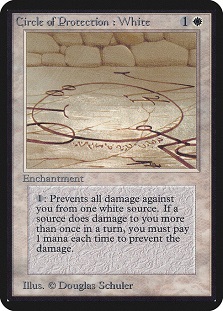
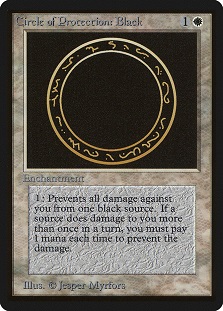
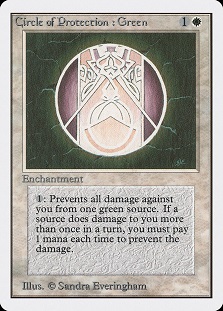

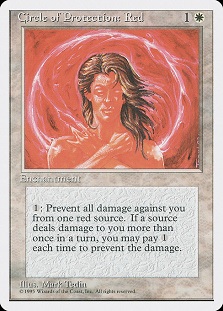
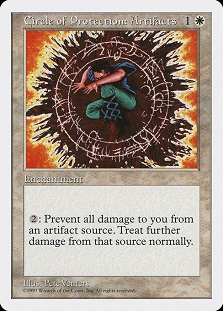
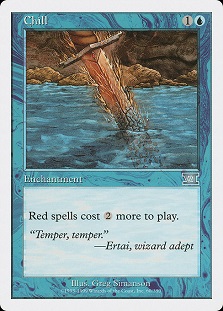


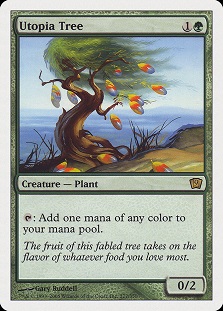

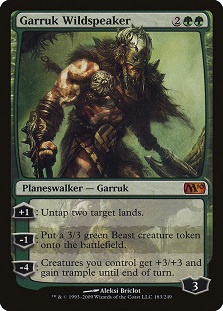
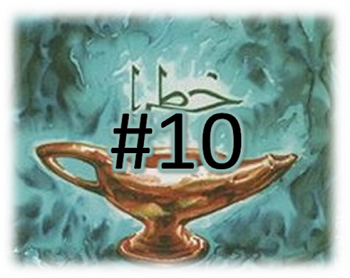


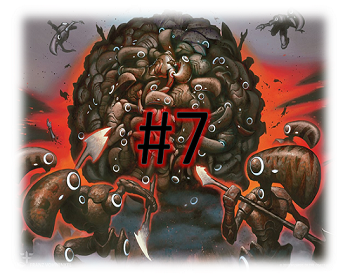
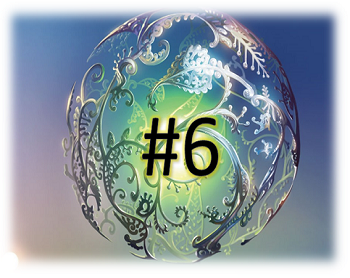


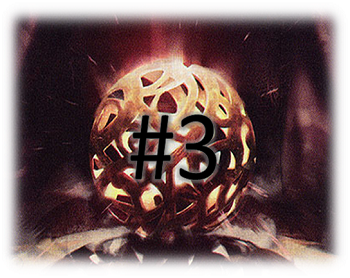
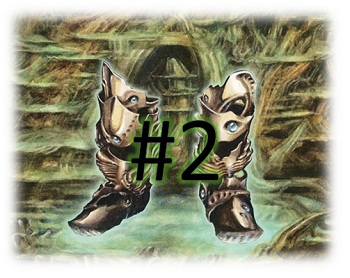

EDHREC Code of Conduct